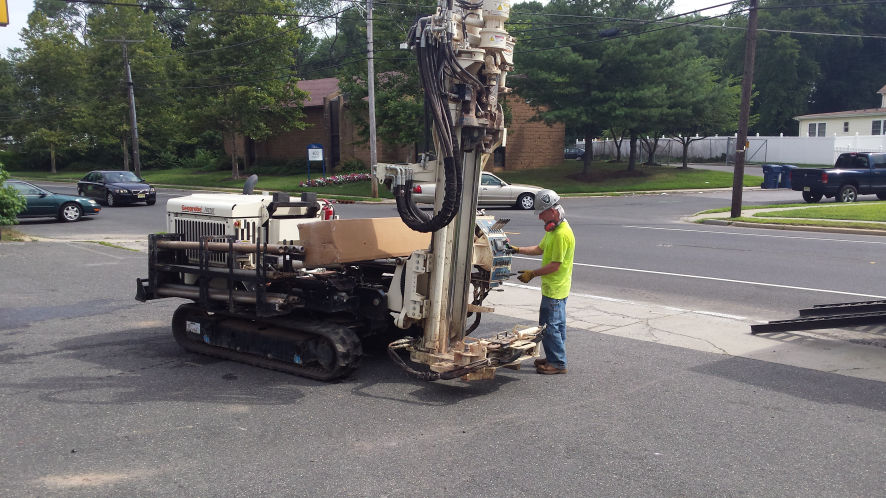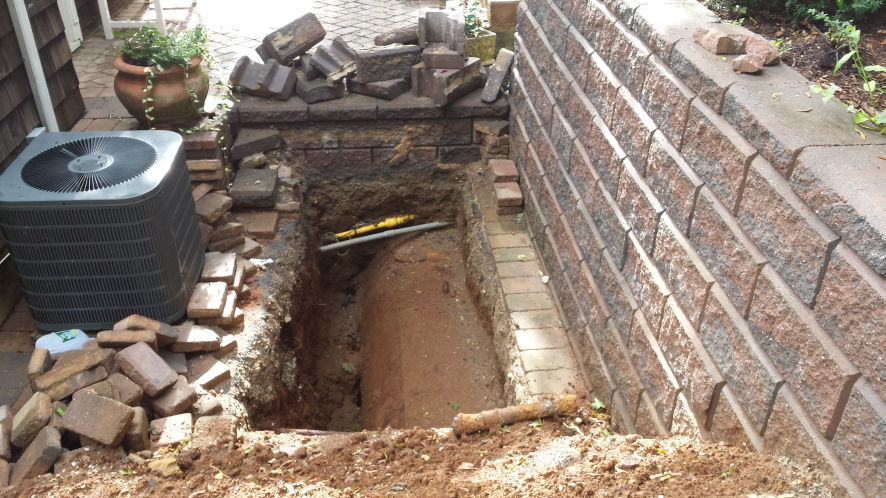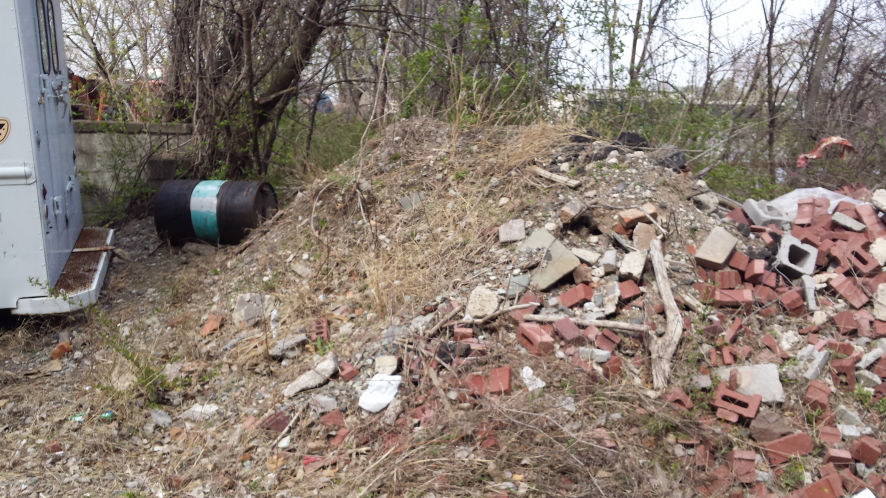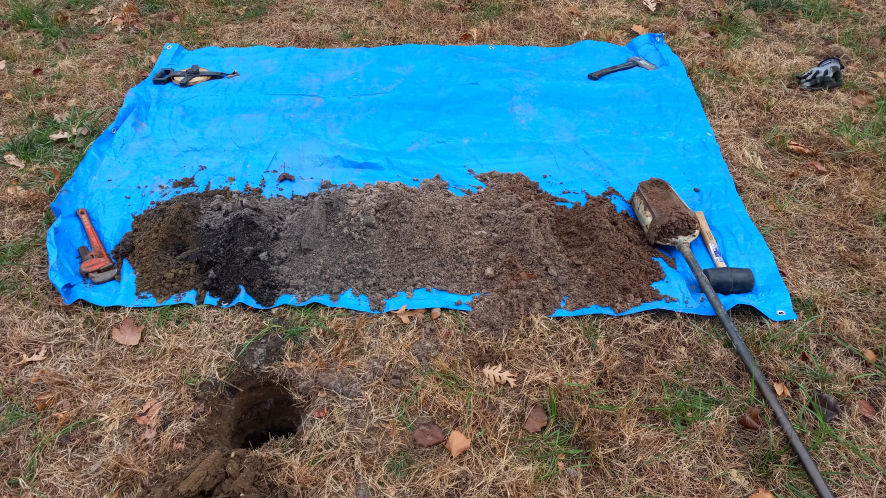

Is an Oil Tank Sweep Necessary in New Jersey?
As of my last knowledge update in September 2021, oil tank sweeps in New Jersey were not mandatory, but they were strongly recommended and often conducted during property inspections, especially for older homes. The reason for this recommendation is the historical use of underground oil storage tanks for heating oil, which could pose environmental and financial risks if they were to leak or be abandoned improperly.
The purpose of an oil tank sweep is to check for the presence of abandoned or undocumented underground oil tanks on a property. If such tanks are discovered, it is important to determine if they have been properly decommissioned or removed, as they can potentially contaminate the soil and groundwater.
However, regulations and recommendations regarding oil tank sweeps can vary by municipality and may have evolved since my last update. Therefore, I recommend checking with local authorities and consulting with a qualified professional, such as a real estate agent or environmental specialist in New Jersey, to get the most up-to-date and accurate information on whether an oil tank sweep is necessary for your specific property.
Additionally, it's essential to be aware that regulations and best practices can change over time, so staying informed about local requirements and guidelines is crucial when dealing with property-related matters.
Link For: Homeowner's Guide to the Unregulated Heating Oil Tank Program (UHOT)
Link For: Department of Environmental Protection Data Miner
Why is an Oil Tank Sweep Important?
An oil tank sweep is important for several reasons, primarily related to environmental, financial, and safety concerns:
Environmental Protection: Underground oil tanks can corrode or leak over time, potentially releasing hazardous substances such as heating oil into the surrounding soil and groundwater. This contamination can have long-lasting and severe environmental consequences, affecting not only the property but also neighboring areas.
Financial Implications: If an undisclosed or abandoned underground oil tank is found on a property, the cost of its removal and environmental remediation can be substantial. Buyers or property owners may be responsible for these expenses, which can significantly impact their finances. Conducting an oil tank sweep helps identify potential issues before they become costly problems.
Compliance with Regulations: Many regions, including New Jersey, have regulations governing the installation, use, and removal of oil tanks. Ensuring compliance with these regulations is crucial to avoid legal issues and penalties.
Property Value: The presence of an underground oil tank, especially one that is not properly documented or decommissioned, can lower the market value of a property. It can also make it more challenging to sell the property in the future.
Peace of Mind: For both buyers and property owners, knowing the status of the property regarding oil tanks provides peace of mind. Identifying and addressing any potential issues proactively can prevent future headaches and liabilities.
Safety: In some cases, abandoned oil tanks may not be properly emptied or sealed, posing a safety hazard due to the risk of explosion or fire.
In summary, an oil tank sweep is essential because it helps protect the environment, ensures compliance with regulations, safeguards financial interests, maintains property value, and provides peace of mind regarding the safety and condition of a property. It is a precautionary measure that can save property owners and buyers from significant costs and legal complications down the road. Link For: What is a No Further Action letter?
How is an Oil Tank Sweep Preformed?
An oil tank sweep, also known as an underground oil tank scan or inspection, is typically performed by a qualified professional, such as an environmental consultant or a specialized company that specializes in tank services. Here's how an oil tank sweep is typically conducted:
Initial Assessment: The process begins with an initial assessment of the property. The professional will gather information about the property's history, including any records or documents related to existing or abandoned oil tanks.
Visual Inspection: The inspector will conduct a visual inspection of the property's exterior, looking for signs that might indicate the presence of an underground oil tank. This can include things like fill pipes, vent pipes, oil lines, or any unusual depressions or anomalies in the ground.
Ground-Penetrating Radar (GPR): One of least used methods, most problematic and inaccurate methods for detecting buried oil tanks is the use of Ground-Penetrating Radar (GPR). GPR equipment emits radar waves into the ground and detects anomalies or changes in the soil density. If there is a buried tank, GPR can often identify its location and approximate size. GPR does not tell one whether something is underground. It only tells one that the ground has been disturbed.
Metal Detector: In some cases, a metal detector may be used to locate metal components of a buried tank, such as the tank itself or associated pipes. A two-box metal detector is commonly used. Two-box metal detectors can penetrate the earth using a rear antenna that transmits a radio signal and a front antenna that receives the radio signal. Once the signal reaches the underground tank, it bounces back to the metal detectors front antenna, which pinpoints the location of the tank.
Soil Sampling: If there are indications of a buried tank, soil samples may be taken from the area to test for the presence of petroleum contamination. This step helps determine if the tank has leaked and if soil remediation is necessary.
Documentation and Reporting: The inspector will document their findings and provide a report to the property owner or potential buyer. This report will include information on whether a tank was found, and recommendations for further action if needed.
Tank Removal or Decommissioning: If a buried tank is found and is no longer in use, it may need to be properly removed or decommissioned according to local regulations. This process often involves cleaning the tank, removing any remaining oil, and filling it with an inert material, such as sand or foam.
Environmental Remediation: If contamination is detected in the soil, further steps may be required to remediate the area, including soil removal and treatment to prevent environmental damage.
It's important to note that the specific procedures and regulations for oil tank sweeps can vary by location, so it's essential to consult with a professionals experienced in this type of work. Additionally, for properties with a history of oil use or in areas where underground oil tanks were common, it's a prudent step to include an oil tank sweep as part of the property inspection process when buying or selling a property.
Link For: Unregulated Heating Oil Tank Program (UHOT): Homeowner's Guide FAQs
What is an Oil Tank Sweep?
An oil tank sweep, also known as an underground oil tank inspection or scan, is a process used to determine whether there is an underground heating oil storage tank on a property, particularly residential properties. The primary purpose of an oil tank sweep is to identify the presence of buried oil tanks, which are used for storing heating oil. Here's a brief overview of what an oil tank sweep entail:
Visual Inspection: A trained professional, such as an environmental consultant or tank services specialist, will conduct a visual inspection of the property's exterior. They will look for any visible signs that may indicate the presence of an underground oil tank. These signs can include fill pipes, vent pipes, oil lines, or unusual depressions or anomalies in the ground.
Use of Detection Equipment: In many cases, professionals use specialized equipment like metal detectors to assist in the detection of buried tanks. Two-box radio detection can identify anomalies that might indicate the presence of a tank.
Soil Sampling: If there is a suspicion of an underground tank, soil samples may be taken from the area to test for the presence of petroleum contamination. This step helps determine if the tank has leaked and if soil remediation is necessary.
Documentation and Reporting: The inspector will document their findings and provide a report to the property owner or potential buyer. This report will include information on whether a tank was found, and recommendations for further action if needed.
Tank Removal or Decommissioning: If a buried tank is discovered and is no longer in use, it may need to be properly removed or decommissioned in accordance with local and State regulations. This often involves cleaning the tank, removing any remaining oil, and filling it with an inert material, such as sand or foam.
The primary goal of an oil tank sweep is to ensure that property buyers and owners are aware of any hidden underground oil tanks that could pose environmental, financial, or safety risks. Discovering an abandoned or leaking underground tank can be costly, as it may require environmental cleanup and remediation efforts.
The need for an oil tank sweep can vary by location, but it is often recommended, especially for properties in regions where underground oil tanks were historically used for heating. Regulations and best practices regarding oil tank sweeps can also change over time, so it's important to consult with local authorities and professionals experienced in this type of inspection for the most up-to-date guidance.
Link For: HEATING OIL TANK SYSTEM REMEDIATION RULES
An Oil Tank Sweep; what is it?
Why do an Oil Tank Sweep?
An oil tank sweep is typically done for several important reasons:
Environmental Protection: Underground oil storage tanks, particularly older ones, can deteriorate over time and develop leaks. These leaks can lead to the contamination of soil and groundwater with hazardous substances like heating oil. Detecting and addressing these issues early through an oil tank sweep can prevent environmental damage and the associated cleanup costs.
Financial Protection: If an underground oil tank is discovered after a property is purchased or sold, it can lead to unexpected and significant financial liabilities. Cleanup and remediation of contaminated soil and groundwater can be expensive, and the responsibility for these costs may fall on the property owner or the buyer if not disclosed during the real estate transaction.
Regulatory Compliance: Many regions, including New Jersey, have regulations and guidelines governing the installation, use, and removal of oil tanks. Ensuring compliance with these regulations is crucial to avoid legal issues and penalties. An oil tank sweep helps identify any non-compliance with local regulations.
Property Value and Marketability: The presence of an underground oil tank, especially one that is not properly documented or decommissioned, can lower the market value of a property and make it less attractive to potential buyers. Addressing any issues discovered during an oil tank sweep can help maintain or increase the property's value and marketability.
Peace of Mind: For both buyers and property owners, knowing the status of the property regarding oil tanks provides peace of mind. It allows them to make informed decisions about property transactions and potential risks.
Safety: In some cases, abandoned oil tanks may not be properly emptied or sealed, posing a safety hazard due to the risk of explosion or fire. An oil tank sweep can identify such hazards.
In summary, an oil tank sweep is performed to protect the environment, ensure financial and legal protection, maintain property value, and provide peace of mind regarding the safety and condition of a property. It is a proactive measure that can prevent costly surprises and legal issues related to hidden underground oil tanks. Link For: NJDEP Open Public Records Act
Who is Responsible for an Oil Tank Sweep in N.J.?
Who is responsible for an oil tank removal in New Jersey?
In New Jersey, the responsibility for oil tank removal can vary depending on the circumstances and the specific agreements made during property transactions. Here are some common scenarios:
Seller Responsibility: In many cases, the seller of a property is responsible for the removal of an underground oil tank if one is discovered during an oil tank sweep or if it is known to exist. Sellers may need to provide documentation proving that the tank has been properly removed or decommissioned in compliance with local regulations before selling the property.
Buyer Responsibility: If an underground oil tank is discovered on a property during an oil tank sweep, the buyer may negotiate with the seller to have the tank removed and any necessary remediation work completed as a condition of the sale. In such cases, the buyer may take on the responsibility for the tank removal and associated costs.
Shared Responsibility: In some cases, buyers and sellers may negotiate a shared responsibility for the tank removal and cleanup costs as part of the purchase agreement.
Historical Liability: In certain situations, even if the tank was abandoned or unused by the current property owner, previous property owners may still be held liable for any contamination or cleanup associated with the tank if it can be shown that the contamination occurred during their ownership.
It's crucial for both buyers and sellers to carefully review the terms and conditions of their real estate contracts and consult with legal professionals or environmental consultants to determine the specific responsibilities and liabilities related to oil tank removal in a particular property transaction. Additionally, local regulations and practices can vary, so it's essential to be aware of any specific requirements in the municipality where the property is located. Consulting with local authorities and experienced professionals is advisable to ensure compliance with all relevant regulations and to protect the interests of all parties involved.
Link For: The Petroleum Underground Storage Tank Remediation, Upgrade and Closure Fund
Does New Jersey Reimburse for Oil Tank Removal?
As of my last knowledge update in September 2021, New Jersey had certain programs and grants that could provide financial assistance or reimbursement for oil tank removal or remediation in specific cases. However, the availability and eligibility for these programs can vary depending on various factors, including the extent of contamination, the location of the property, and changes in government policies. It's important to note that program details and funding availability may have changed since then.
One such program in New Jersey was the Petroleum Underground Storage Tank Remediation, Upgrade, and Closure Fund (UST Fund). This fund was established to assist property owners in addressing contamination from leaking underground storage tanks, including heating oil tanks. Property owners who met certain criteria, such as having an eligible tank and demonstrating financial need, could apply for reimbursement or assistance with cleanup costs.
To determine the current status of any reimbursement or financial assistance programs related to oil tank removal in New Jersey, I recommend contacting the New Jersey Department of Environmental Protection (NJDEP) or a qualified environmental consultant. They can provide the most up-to-date information on available programs, eligibility requirements, and the application process.
Keep in mind that dealing with oil tank removal and contamination issues can be complex, and it's essential to follow all local regulations and seek professional guidance to ensure compliance and maximize the potential for reimbursement or assistance if applicable.
Link For: Site Remediation Program Rules
How Long is an Oil Tank Sweep good for?
An oil tank sweep, also known as an underground oil tank inspection, is usually valid for 1 year and is non-transferable. However, many companies the results of an oil tank sweep are typically considered current only for the time of the inspection. The effectiveness of an oil tank sweep can be influenced by various factors, including changes in property conditions, new construction, and the accuracy of the equipment used.
Here are some considerations regarding the duration of an oil tank sweep:
Property Changes: If significant changes occur on the property after the initial oil tank sweep, such as excavation or construction, it may be necessary to conduct a follow-up inspection to ensure that no underground tanks were disturbed or newly installed.
Property Ownership Changes: If a property changes ownership, the new owner may choose to have a new oil tank sweep conducted to verify the status of the property, as the previous owner's inspection results may not fully reflect the current conditions.
Regular Inspections: Some property owners or buyers choose to conduct oil tank sweeps periodically, even if no immediate need is identified. This can provide ongoing peace of mind regarding the property's condition.
In general, it is advisable to consider the specific circumstances and any changes to the property when determining whether to conduct a new inspection. If you have concerns about the potential presence of underground oil tanks on a property, consulting with a qualified environmental consultant or a professional experienced in oil tank sweeps can help you make an informed decision about the timing and necessity of an inspection.
Link For: NJDEP UST Fund Cost Guide
How Much Does an Oil Tank Sweep Cost?
The cost of an oil tank sweep in New Jersey can vary depending on several factors, including the location, the size of the property, and the specific services provided by the company conducting the sweep. However, as of my last knowledge update in September 2021, I can provide you with a general idea of the typical cost range.
In New Jersey, the cost of an oil tank sweep typically falls within the range of $225 to $500 or more. This cost includes the inspection and scanning of the property for the presence of underground oil tanks. If an oil tank is detected during the sweep, additional costs for tank removal and soil remediation may apply, which can vary significantly depending on the size of the tank and the extent of contamination.
Keep in mind that prices may have changed since my last update, and it's essential to get quotes from multiple reputable companies in your area to get an accurate estimate for your specific property. Additionally, regulations and requirements related to oil tank sweeps and removal can change over time, so it's essential to consult with local authorities or experts in your area for the most up-to-date information.
Link For: Unregulated Heating Oil Tank Program Process
Phase 1 Environmental Site Assessment



